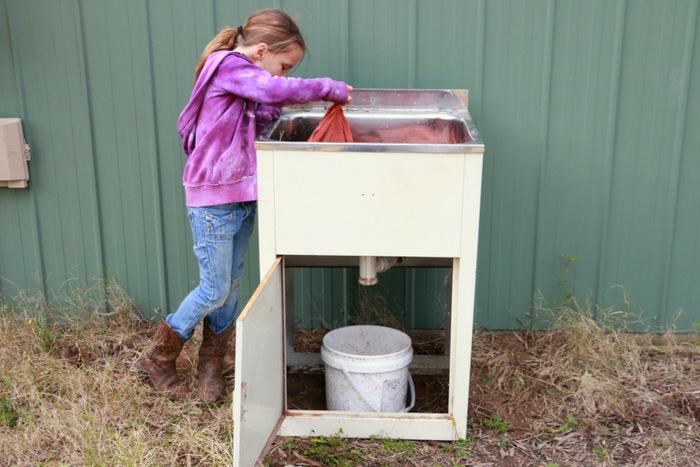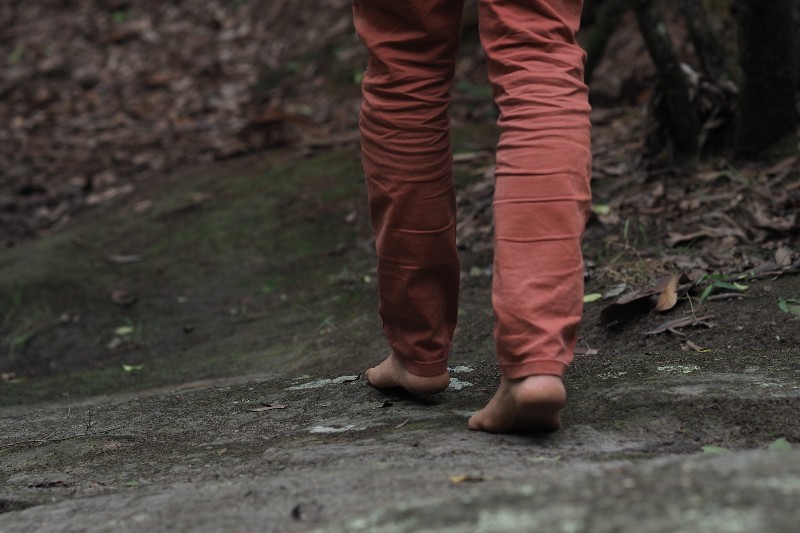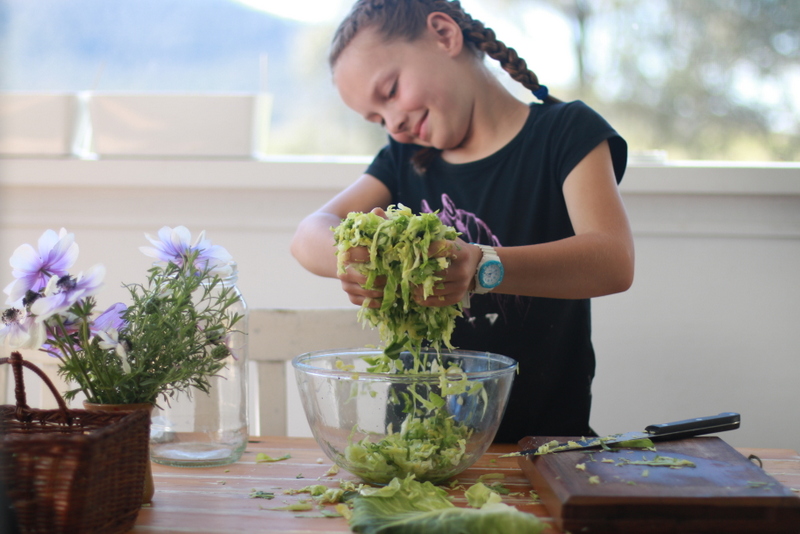Worms are wonderful workers to have in your garden. They turn kitchen scraps into nourishing free fertiliser. A worm farm is an easy, kid-friendly do-it-yourself project. You can use a range of recycled containers, including styrofoam vegie boxes, an old bathtub, or my favourite – an old stand-alone laundry tub.
I love my laundry tub worm farms so much that I now have three of them. You can never have too many worms.
Laundry tubs are at a convenient height and the cabinet below provides a perfect spot for placing a bucket to collect the worm wee.
Old laundry tubs are relatively easy to find. I sourced mine for free or for just a few dollars from the side of the road, a garage sale and from a second-hand building materials store.
Worms are sensitive to extreme heat or cold, so locate your worm farm somewhere that is warm in winter and cool in summer. Underneath a deciduous tree is ideal. I keep my worm farms on the northern side of our shed in winter and then move them to the shaded southern side in summer.
We set up our most recent worm farm in less than an hour. First, place a bucket underneath the drain to collect the worm wee.
Then place a small piece of shade cloth or curtain netting over the drain hole and hold it in place with a few stones. This will stop the drain hole from becoming clogged.
Next, add a layer of gravel or pebbles to a depth of at least five centimetres to provide good drainage.
Cut and place a piece of shade cloth, curtain netting or a scrap piece of fabric over the gravel. An old worn towel or sheet works fine but will need to be replaced as it rots. This prevents the worm castings from clogging up the drainage material.
The worm bedding can now be added. Bedding options include compost, shredded paper, leaves or old straw. Ideally, use whatever you can salvage from your backyard or neighbourhood. If you are using dry materials, wet them first and then squeeze out excess water.When setting up our most recent worm farm, I used old weeds, bedding from the chook pen and a bucket of compost from one of my other worm farms.
You can buy compost worms online, or better still get your worms from a friend or neighbour who has a worm farm. An easy way to collect worms from an existing worm farm is to crack an egg in one corner. Return a day later and that corner will be full of worms ready to collect. You will need at least 1000 worms – one big handful.
Once you have added the worms to their bedding, tuck them in and keep their bedding dark and moist by covering it with a damp towel, old hessian bag or damp newspaper or cardboard.
Then cover the worm farm to protect from rain and sun. A scrap piece of timber or corrugated iron works well.
It is important to not overfeed your worms. After a week you can start adding kitchen scraps to their bedding. Add only small amounts (around a handful) initially. As more worms breed, they will eat more food.
Next week, I’ll share tips for how to care for your worms and how to make the most of your worm wee and castings.
Originally published in the Newcastle Herald Monday 25th August 2014.



